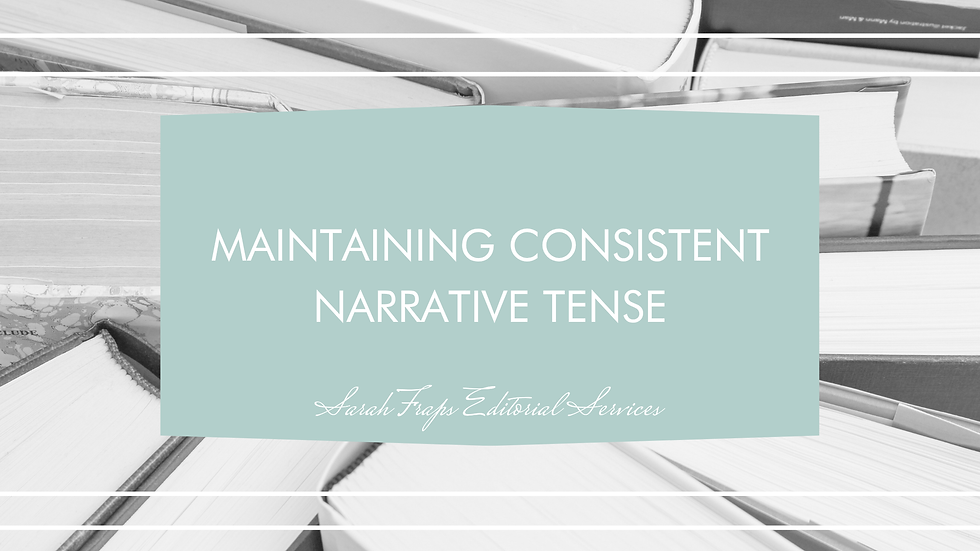Elements of style: sentence structure
- Sarah Fraps

- Mar 21
- 3 min read
On LinkedIn recently a fellow freelance editor challenged a few folks to rewrite a set of sentences to reduce repetition and enhance sentence style and variability. It's difficult to edit for style without full context, but it was a fun exercise, and I had even more fun reading through the comments for other people's suggestions. No two suggestions were the same! Read on for the next post in the series on elements of style in fiction: sentence structure.

One of the hallmarks of engaging fiction is the writer’s ability to vary sentence style and structure. A monotonous rhythm can serve a storytelling purpose but it can also bore readers, while a dynamic flow keeps engagement high. Here are some techniques to diversify sentence structure in your fiction, with some made-up examples to illustrate effect.
1. Mix Short and Long Sentences
Sentence length (literally, whether the sentence is long or short in word count) can support mood and tone (discussed in previous blog posts here and here), as well as pacing and flow. Short sentences create urgency and impact. Longer sentences allow for deeper exploration of a character’s thoughts or the intricacies of a scene.
Example (short): The door creaked open. A shadow stretched across the floor. Sarah held her breath, frozen.
Example (long): Slowly, she reached down for the rusted dagger tucked inside her boot, her pulse hammering as she watched the figure emerge into the light cast by the moon through the window.
2. Vary Sentence Beginnings
Starting every sentence the same way can make writing feel repetitive, so varying sentence openings keeps prose lively. Different beginnings for sentences written in first person ("I") can be especially important to avoid too much repetition.
Example with "I" (too much repetition): I ran through the alley, my heart pounding. I turned a corner, stumbling over a pile of broken crates. Behind me, footsteps echoed.
Revised: Heart pounding, I sprinted through the alley. Overturned crates sent me stumbling as I turned a corner. Footsteps echoed behind me.
3. Experiment with Sentence Types
A mix of simple (independent clause; single subject and verb), compound (two complete thoughts with coordinating conjunction), and complex (one complete thought with attached dependent clauses that cannot stand alone) sentences adds diversity and enhances storytelling by supporting mood and tone. (Notice the use of free indirect speech as well in example 2—that's more of a product of perspective but worth noting!)
Example 1 (simple and compound): She looked at the letter. (simple) It was addressed to her, but she didn’t recognize the handwriting. (compound)
Example 2 : She stared at the letter, addressed to her in an unfamiliar hand. (complex) Should she open it? (simple) Her fingers trembled as she traced the inked name on the envelope. (complex)
4. Utilize Rhetorical Devices
Devices like parallelism (similar grammatical structure), repetition, and anaphora (repetition of words or phrases at the beginnings of multiple sentences) can create cadence (rhythm) and emphasis. (More on rhetorical devices and figurative language in future posts!)
Example 1: She had seen it before. She had lived it before. She would survive it again. (parallelism, anaphora)
Example 2: Would he come back? Would he keep his promise? She would wait and watch and wonder. (all three)
5. Break Rules for Effect
Sentence fragments, run-ons, and other unusual structures can be powerful when used intentionally, especially in thoughts, dialogue, and free indirect speech.
Example 1: No time to think. She must run. Must escape. Must survive. (fragments)
Example 2: She stopped running, out of breath, wind in her hair, blood on her hands. There was nowhere left to go. (run-on)
Experiment with these techniques, looking for ways to avoid redundancy, create emphasis, or evoke a particular atmosphere in the narrative and soon your writing will feel more dynamic and alive!








Comments